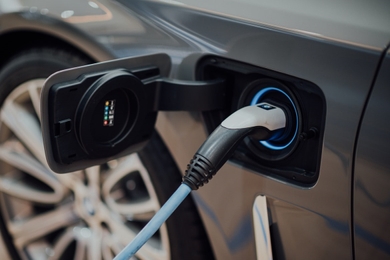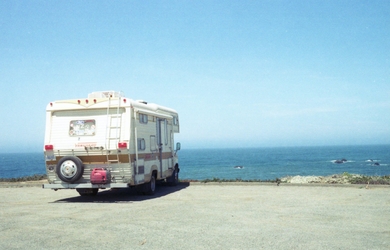Car Insurance Calculator - Home & Auto Insurance Guide | Gabi

How much car insurance should you get? With Gabi’s car insurance cost calculator, you can compare auto insurance quotes for free!
Are you wondering how to calculate how much car insurance you need? Most states and lenders have minimum coverage requirements, but you may want additional coverage to protect your vehicle or assets. Further, you might currently have too much coverage which is causing you to overpay.
To help you figure the right amount of car insurance for your situation, this article will share:
• The different types of auto insurance coverage
• How much car insurance you need by type
• How to get the best deal using our car insurance calculator
How much auto insurance do I need?
The first thing to consider when figuring out how much car insurance you need is how much you are required to have by your state, lender, and/or leasing company. Then, your personal considerations will come into play. Here’s what you need to know.
1. Auto insurance state requirements
Each state has laws regarding auto insurance and most require you to have some level of coverage. In the chart below, you’ll find the type of insurance required by each state along with the minimum liability limits here.
The consequences of not maintaining insurance can be costly. Law enforcement has been known to place boots on uninsured vehicles, take off their license plates, and even impound them. If you’re caught driving, you may be ticketed and you could lose your driving privileges. For most (87% of drivers), it’s simply not a risk worth taking.
2. Finance and lease requirements
The government isn’t the only one that cares about your car insurance. If your financing or leasing your vehicle, you will almost always need to carry full coverage which includes state-required liability, collision, and comprehensive coverage. Lenders and leasing companies also often require you to meet requirements for your collision and comprehensive policy limits and deductible amounts.
3. Personal requirements
Aside from meeting mandatory insurance requirements, it’s important to consider the additional protection you want for your personal situation to ensure your family and assets are protected. Read on to learn more about each coverage type.
Compare rates over 40 + top insurance companies to find the right coverage for you!
Types of auto insurance coverage
Here’s a closer look at each auto insurance type so you can decide how much coverage is right for you.
Liability coverage
If you don’t live in Virginia or New Hampshire, liability auto insurance coverage is a requirement. This type of coverage generally pays out, up to your policy limits, if you cause damages to another person or their property,
Liability policies are broken down into two parts, bodily injury (BI) which pays for another party’s medical expenses, and property damage (PD) which pays to repair damages to another person’s property.
Insurers generally list the coverage limits by the BI limit per person, the BI limit per accident, and the PD limit. For example, 25/50/25 means you are covered up to $25,000 for BI per person, up to $50,000 for BI per accident, and up to $25,000 for PD.
Do you need it?
If you don’t have enough coverage to cover a claim, you can be sued for the difference. If you have too much, you could be overpaying on your premium. A good rule of thumb is to set your limits equal to your net worth (the value of all the things you own, less your debt).
Comprehensive coverage
Comprehensive coverage protects your car against damages from covered events besides collisions and rollovers. Generally, damages from wind, fire, theft, vandalism, hitting an animal, falling objects, and hail are covered.
In the event of a covered claim, you will typically pay your deductible and then your policy will pay for repairs or a replacement, up to your policy limit. Comprehensive coverage is typically required if you are leasing or financing your car to protect the leasing or lending institute’s collateral.
Do you need it?
Approximately 78% of drivers with insurance have comprehensive coverage and liability insurance, according to the latest data from the Insurance Information Institute (III). If you own your car outright, you can run the numbers to decide whether the protection of this coverage outweighs the cost or not. Find out your car’s value and subtract the deductible and premium to see how much you’d pay to replace your car. If it’s a large number and more than you’d want to foot out-of-pocket, this coverage is a good investment.
Collision
Like comprehensive, you must carry collision when your vehicle is financed or leased. Otherwise, it’s optional. However, about 74% of drivers carry collision coverage, according to the III. Collision coverage pays to repair or replace your vehicle if you are found to be at-fault in an accident, you roll your vehicle, or you hit another object like a tree or a pole.
Collision may also kick in if another driver is at fault, but doesn’t have enough insurance to pay for your damages. In the event of a covered claim, you will pay a deductible, and then your insurer will cover the rest of the expenses, up to your policy limit.
Do you need it?
If collision coverage is optional for you, you’ll have to weigh the costs against the benefits. Have you been in many at-fault accidents? If so, it’s likely a good idea. Can you pay to repair or replace your car out-of-pocket if you cause an accident? Do you want to? If you can’t or don’t want to, this coverage is likely a good investment.
Pro tip: Don’t file a claim if the cost to repair your vehicle is less than your deductible. Your insurance company won’t cover the accident, but they will record it and may use the information to increase the cost of your policy.
Uninsured and underinsured motorist
Uninsured motorist (UM) is a policy that covers you if you are in an accident caused by one of the 13% of motorists driving around uninsured. Underinsured motorist (UIM) coverage covers you if you’re in an accident caused by a motorist without enough insurance to pay for your damages.
Do you need it?
These two coverage types are often combined together and are required by some states. However, if you have collision coverage, it can often substitute for UI/UIM coverage as it provides the same protection.
Personal injury protection
Also known as PIP, personal injury protection covers you and your passengers no matter who’s at fault in an accident. It pays for medical bills, lost wages, death benefits, ambulance fees, and sometimes, it can pay for personal care services, such as home aides, lawn care, and housekeeping. This is required in some states.
Do you need it?
If PIP isn’t required for you, you may still want this coverage for peace of mind when out on the road. You can rest assured that if you cause an accident, all those in your car will have financial protection for medical costs that result from bodily injury.
Medical payments
Medical payments coverage also pays medical costs for you and your passengers no matter who is at fault; however, the limits tend to be lower than that of PIP. It’s typically optional, but some states do require it as part of your liability package.
Do you need it?
If your state doesn’t require medical payments, PIP offers more comprehensive coverage.
Premium options
Auto insurance companies also offer several premium options. These coverage types are completely optional but are often worth adding to your policy.
• Rental reimbursement: Rental reimbursement, sometimes called travel credit or transportation expense, pays your transportation expenses in the event of a covered claim. It may pay for a rental vehicle for up to 30 days or public transportation.
• Roadside assistance: Also called emergency road service, this coverage provides you with tow services, labor to change a flat tire, jump starts, lockout services, and more.
• Mechanical breakdown: This coverage is like your dealer’s or manufacturer’s warranty. It covers your vehicle’s various systems, such as breaks, transmission, air conditioning, drive axle, and more. It’s typically only offered on new vehicles.
• Accident forgiveness: Accident forgiveness is earned and applied free to your policy if you qualify. It’s great because if you’re at-fault in an accident, it excuses any surcharging. Remember surcharging is the additional rate insurance companies apply after a costly accident.
Each coverage type certainly has its benefit, but all are not required or necessary in all situations. For example, some people will opt out of rental reimbursement coverage because they have a second vehicle. Or you may opt-out of UI/UIM because you have collision coverage. Analyze the coverage types to decide what offers you the best overall value.
Pro tip: Find the coverages you currently have (and what they cost) on your Declarations Page. Ask your insurer to email you a copy of it.
Gabi can help you find your best car insurance rates
Once you have a good idea of the car insurance types and coverage limit amounts you need, it’s a good idea to shop around and compare rates. Every auto insurer analyzes policyholders differently and has its own way of calculating premiums. Further, some may offer discounts and credit to sweeten the deal.
With Gabi’s auto insurance calculator, you can instantly compare quotes from multiple insurers side by side to find the best value.









